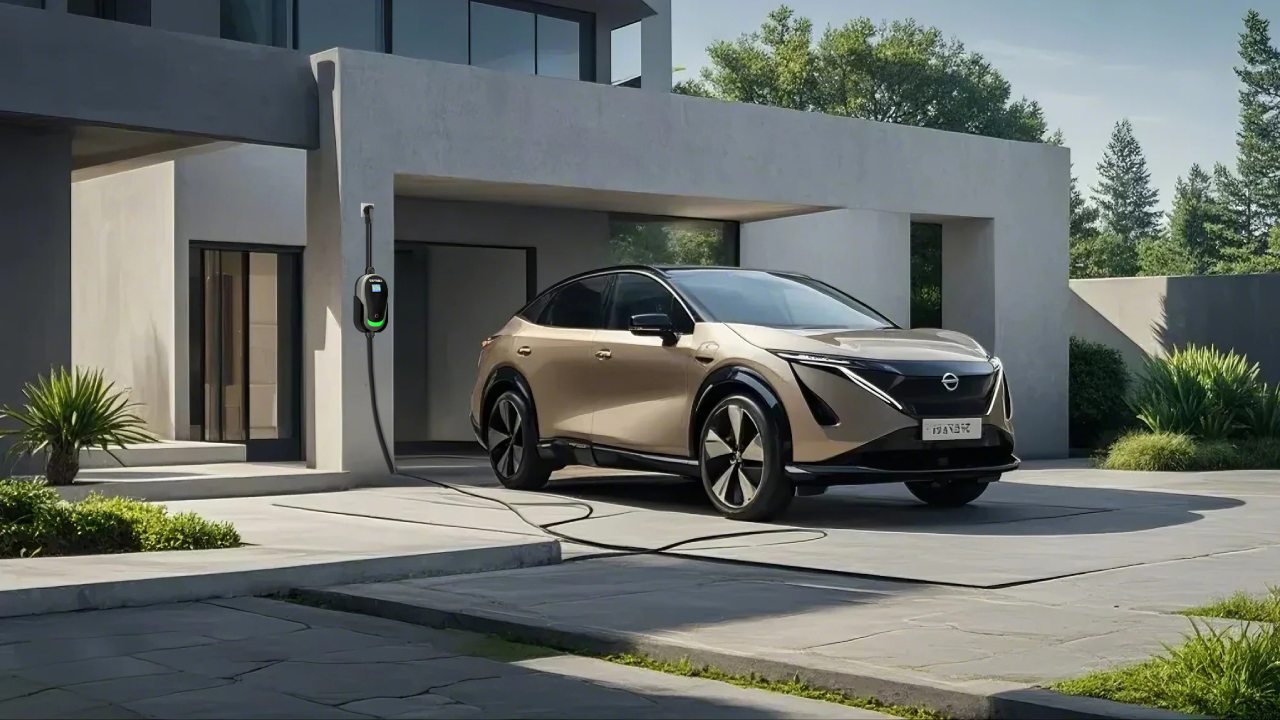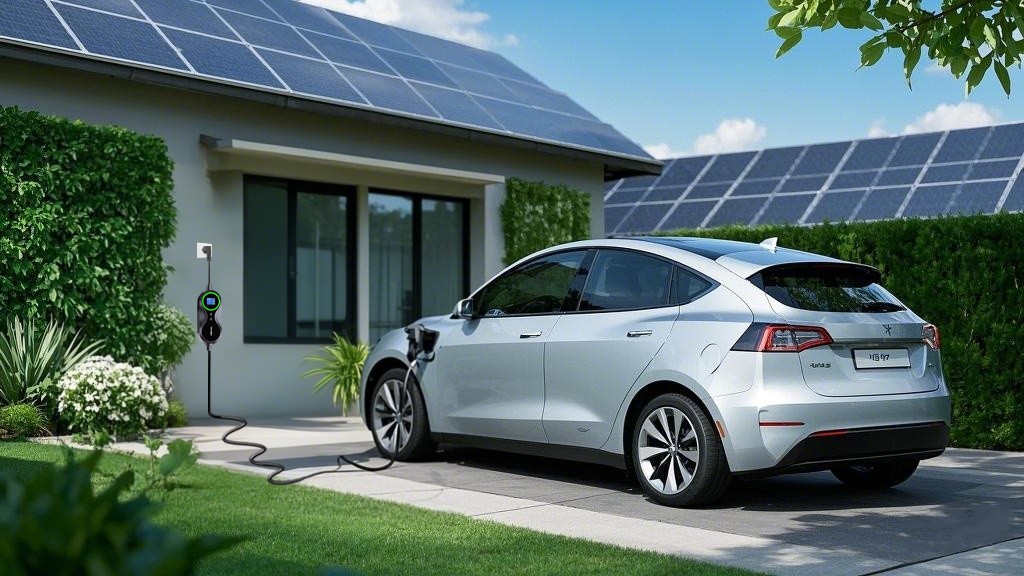CHAdeMO vs. CCS: What Charging Connector Does the Nissan Leaf Have?
The Nissan Leaf has been a pioneer in the electric vehicle market for over a decade. However, its choice of charging port has set it on a unique path, one distinct from most of its competitors.
Unlike many modern EVs that are converging on the CCS standard, the Leaf has maintained its course, making the Nissan Leaf charger connector type a topic of interest for owners and prospective buyers alike.

The Nissan Leaf's Charging Ports: A Two-Plug System
The Nissan Leaf has consistently featured a two-inlet charging port layout from its first generation to the most recent models.
1. J1772 Port for AC Charging: This is the standard inlet for Level 1 (120V) and Level 2 (240V) charging. You'll use this port for most of your charging, especially overnight at home or public destination chargers. It's the universal AC charging port for non-Tesla EVs in North America and other regions.
2. CHAdeMO Port for DC Fast Charging: This is the distinctive feature of the Nissan Leaf. While most other automakers have adopted the Combined Charging System (CCS) for DC fast charging, the Leaf has historically used the CHAdeMO connector. This round, bulky plug has been the Leaf's gateway to rapid charging sessions, capable of replenishing a significant portion of the battery in about 30-45 minutes.
A Deep Dive into the CHAdeMO Connector
CHAdeMO, a shorthand for "CHArge de MOve," is a fast-charging standard developed in Japan with the support of Nissan, Mitsubishi, and Toyota, among others. It was one of the first DC fast-charging standards to gain widespread adoption, especially in the early days of modern EVs.
A key technical advantage often highlighted by proponents of CHAdeMO is its early capability for bidirectional charging—allowing the car to send power back to the grid or power a home (V2G - Vehicle-to-Grid). This feature, which turns the vehicle into a mobile energy storage unit, has been a core part of the CHAdeMO protocol, though its real-world application remains limited.
However, the landscape has shifted. Despite its early lead, CHAdeMO has been overtaken mainly in global markets by the CCS standard, as one article from 2015 predicted, "The CCS standard has the backing of European and American automotive giants." This prediction held, with CCS becoming the dominant standard in Europe and North America.
The Rising Standard: Understanding CCS
The Combined Charging System (CCS) is a standard that combines the familiar J1772 AC charging inlet with two additional DC pins for fast charging. This "combo" design is a key differentiator, allowing for a single, unified AC and DC charging port.
CCS gained immense momentum because a powerful coalition of major American and European automakers, including Ford, GM, Volkswagen Group, BMW, and Mercedes-Benz, backed it. This broad industry support led to a rapid expansion of CCS-compatible charging networks, making it the most common fast-charging type for new EVs sold outside Asia. The widespread adoption of CCS means that public charging infrastructure has increasingly focused on deploying CCS plugs, sometimes at the expense of CHAdeMO availability.
Decoding the Nissan Leaf Charger Connector Type
So, why did Nissan choose a different path? The answer lies in timing and origin. As the first mass-market modern EV, the Nissan Leaf was developed when CHAdeMO was Japan's leading and most proven fast-charging standard. Sticking with CHAdeMO provided consistency across all generations of the vehicle.
The practical implication is that owners must seek out charging stations with a CHAdeMO cable. While many stations, especially in urban areas, are equipped with CHAdeMO and CCS plugs, newer charging hubs may sometimes only feature CCS, limiting Leaf owners on long trips.
It's also worth noting that the Nissan Leaf charger connector type has implications for charging speed. The Leaf's passive battery cooling system influences its fast-charging curve. Testing has shown that to protect the battery, charging power decreases significantly once the battery reaches a certain temperature threshold, often after the first fast charge on a long journey. For example, tests on a 40 kWh Leaf showed that charging power could drop from around 44 kW to 25 kW as the battery temperature increased.
The Future: A Shift to the NACS Standard
The story of the Nissan Leaf charger connector type is taking a dramatic turn. In a major industry shift, Nissan has announced that future electric vehicles, including a next-generation Leaf, will adopt the North American Charging Standard (NACS) port—the connector used by Tesla.
This move will fundamentally change the charging experience for future Leaf owners. Starting with models like the 2026 Nissan Leaf, which is reported to feature an NACS port for DC fast charging (capable of 150-kW speeds) alongside the J1772 port for AC charging, owners will gain native access to Tesla's vast Supercharger network. This will significantly improve the convenience of long-distance travel.
For current Leaf owners with a CHAdeMO port, this transition does not render their cars obsolete. CHAdeMO charging infrastructure will remain operational for years to come. Furthermore, adapters will bridge the gap. While CHAdeMO to CCS adapters already exist (e.g., the Akyga AK-SC-E18 adapter), the industry is expected to produce solutions allowing vehicles with NACS ports to charge at CHAdeMO stations, and vice versa.
Conclusion
The Nissan Leaf's journey with the CHAdeMO connector is a testament to EV technology's evolving and sometimes fragmented nature. While CHAdeMO offered early innovation, particularly with bidirectional charging, the industry's consolidation around the CCS standard—and now the rapid adoption of NACS—has highlighted the challenges of a proprietary path.
The answer is clear for now: if you drive a Nissan Leaf, your fast-charging port is CHAdeMO. But look ahead, and the roadmap points toward NACS, promising a future where charging an electric vehicle is more straightforward and accessible for everyone.
Last Updated on September 23, 2025 by tayniu


